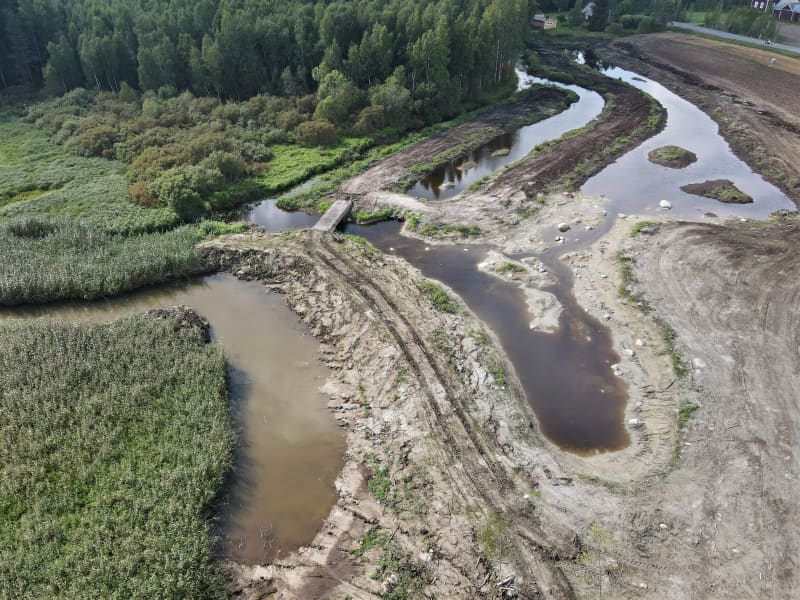
The money has been used to mow aquatic vegetation, build wetlands and restore fish spawning grounds.
Water bodies have been restored at a record pace in recent years throughout the country.
In the Ely region of South Ostrobothnia alone, which covers the three Ostrobothnia provinces, up to 50 projects have been underway during the year.
A historically large investment in water protection is underway. For five years (2019–2023), the government has allocated almost 70 million euros to water projects and water protection. About 20 million of the money is intended for waterway restoration projects.
Rivers, lakes and sea areas have been restored in the Nordic provinces.
Projects are implemented by a motley group, but mainly they are sub-district and sub-district municipalities, local water protection associations or municipalities.
Some projects last a year, others two or three years.
The needs of the locals are also important
There are enough restoration needs, at least in the provinces of Ostrobothnia, because the waterways in the region are in a weak state in some places.
– Fortunately, there is a renovation project in the area. We have also increased information on grant opportunities, which has increased the number of projects, says Riku Palo.
The biggest burdens are agriculture and forestry. They have the greatest impact on the state of the waters with the increase in the amount of nutrients and solid matter, which makes the water bodies eutrophic.
The acidic sulfate soils characteristic of Ostrobothnia’s coastal areas cause problems for waterways if, for example, as a result of tillage, acidic compounds get dissolved in waterways. This can result in fish deaths.

In addition, the characteristic feature of Ostrobothnia’s coast, the elevation of the land, also has an effect. The low bay areas of the coast are lowering faster than the rest of the country, because the uplift of the land is strongest in Merenkurku.
Together with excessive nutrient loading, this accelerates the eutrophication of sea bays. It can be seen, for example, as blue-green algae blooms and overgrowth.
Water management is guided by water management plans. The goal is to get the water bodies in an ecologically good condition. Funds are allocated especially where the need is greatest or if there is a threat somewhere.
The wishes of the locals are also heard.
– People who live and move around water bodies know if there are any problems in the waters of the area, what to do, says water management expert Riku Palo.
Wetlands and meadows
Aquatic vegetation is harvested annually in the provinces of Ostrobothnia in various projects.
Mowing projects have been carried out, for example, in Uussakaarlepyy in Munsala’s Bullerholmsfjärden and in Kokkola’s Ruotsalo in Pirttiperä sea bay.
By mowing aquatic vegetation, for example lake reeds, water bodies become more diverse, because an excessive abundance of any aquatic plant can harm the aquatic life or carbon sequestration.
In South Ostrobothnia, in Ähtäri, a wetland has been built in Perännejärvi’s Niemenlahti.
The purpose of wetlands is to slow down the flow of water or prevent nutrients brought by runoff from agriculture and forestry from reaching, for example, a lake.
Management fishing has been carried out in Kuortaneen and Ähtärinjärvi. The municipality of Alavude has run a multi-year project in order to restore the badly eutrophic and overgrown Lake Alavudenjärvi and the catchment area above it.
The restoration of the water body also has an effect on the preservation of species.
– For example, with management fishing, skewed fisheries are corrected. The mowing of aquatic vegetation has contributed to the rise of waterfowl populations, says expert Riku Palo.
*You can discuss the topic until Friday at 11 pm.*
